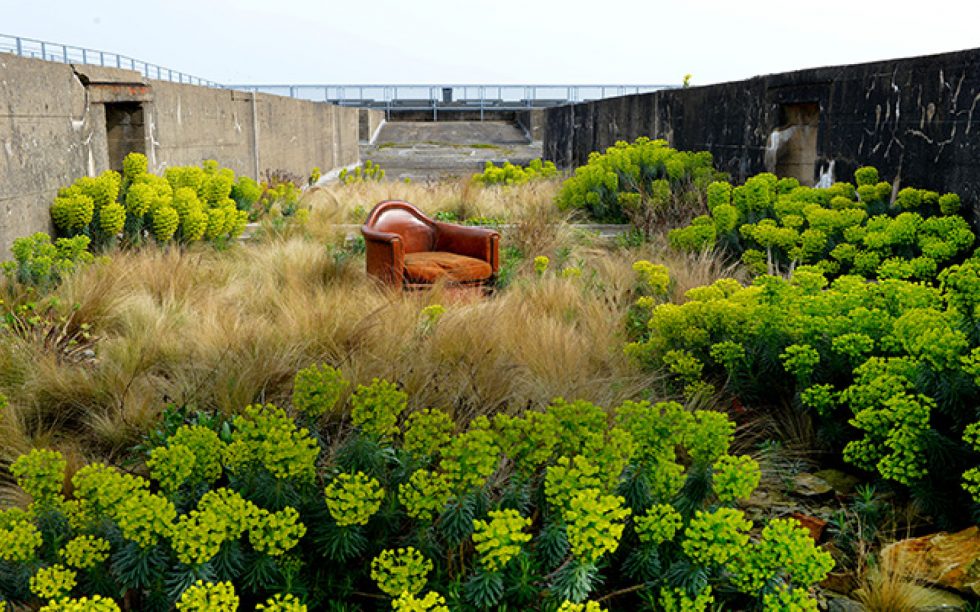What is the opposite of the design and planning we discuss in this blog?
You could say, the absence of planning and design, chaos, waste land and disorder.
The answer is true only in an anthropocentric sense.
In the absence of human planning, in fact, spaces continue to be occupied by other species that, in their own way, give a function to the spaces and, in this way, intervene in them, although in a less obvious way than the human species.
Almost twenty years ago, the French agronomist and landscape designer Gilles Clément, based on the observation of these spaces, gave life to the Third Landscape Manifesto.
Taking into account the very definition of the Third Landscape (although perhaps not everyone understood its meaning), the manifesto was born with the idea of focusing on these spaces but not so that we could intervene on them. In fact, the manifesto was more of an invitation to do nothing about them and, in general, to do as little as possible.
The Third Landscape, formed by the set of abandoned, residual spaces, those never touched by man and reserves, according to Clément, is “a space that expresses neither power nor submission to power.”
As a space that escapes anthropization, the Third Landscape is in a certain sense anarchic and the exaltation of this “romantic” aspect of it is probably the final objective of Clément’s manifesto, which not by chance introduces the concept with reference to the much more political Third State.

The Third Landscape, furthermore, appears almost as the landscape transfiguration of a revolt of the “last” and the “rebels”, those who cannot be exploited or subjugated due to insufficiency, sacredness or difficulty in being domesticated.
The spaces of the Third Landscape, as well as the last and the rebels, are protected from the law of men: they do not submit or attempt to subjugate anyone.
They just want to live in peace, with their rules and harmony.
The Third Landscape, in Clément’s vision, is the welcoming space par excellence, a refuge, where all species that disturb man or that exist independently of man find a way to exist and develop.
The Third Landscape thus represents the cradle of diversity, since, as Clément points out, where man dominates diversity decreases.
The Third Landscape, moreover, dominates in the suburbs, far from the cities, high in the mountains, in the forests and, always, in any case, even when it is in the middle of the city, it aims to return to nature.
The Third Landscape, in short, is the idea, perhaps naive or unreal, of a space of freedom and “biological invention” beyond human laws and the (apparently considered) parasitic tendency of man.
“Human activity,” notes Clément, “accelerates the union process that leads to a pangea, decreases the number of isolated enclosures and, consequently, the number of species.
“Increasing planetary anthropization leads to the creation of increasingly numerous residual spaces and increasingly smaller primary ensembles (spaces never touched by man, ed.).”
Only species whose life is compatible with the reduction of available spaces survive.
Faced with a text that equates anthropization with natural cataclysms, in relation to the decrease in the number of species on earth, we can well say that the Third Landscape Manifesto is anti-humanist, radically ecological and postmodern in the post-anthropocentric utopia that implicitly reveals.
Only the abandonment of spaces, even more than the desire to preserve it, allows the development of diversity, explains Clément.
Our interpretation, furthermore, seems to find confirmation in an interview given by the French writer to Italian state television in 2015:

“What is the point of observing, interpreting and reading the landscape in real and concrete terms?” asks the journalist.
“There are no other purposes,” Clément responds, “other than to know where you live. Understanding the environment in which you live allows you to know how to act, how to make good gestures, how to allow a happy future to emerge.”
And again: “The dilemma that remains open is: leave everything as it is or intervene? In short, what does the Third Landscape aspire to become?”
Again, Clément insists:
“In our profession I often argue that doing nothing is useful for everyone. Because if nothing is done, the land becomes a wasteland and then a forest. It produces the oxygen we need to live and that we all share. Of course, you can also intervene. But, in this case, it is no longer the Third Landscape but rather the Garden.”
I don’t think it is a question of choosing, I am convinced that it is a question of reflecting: on balance and when silence and inaction are appropriate.
Emmanuel Raffaele Maraziti

